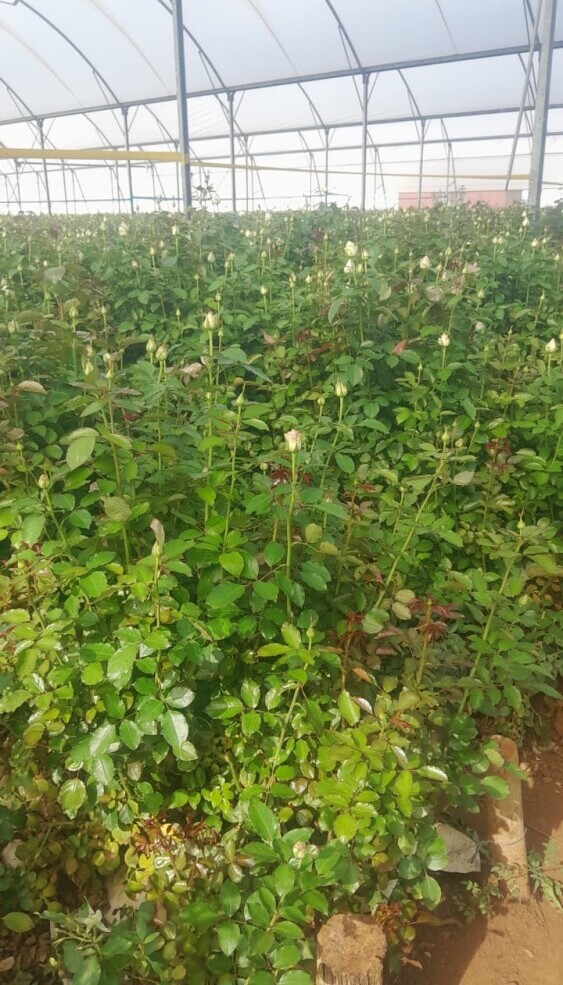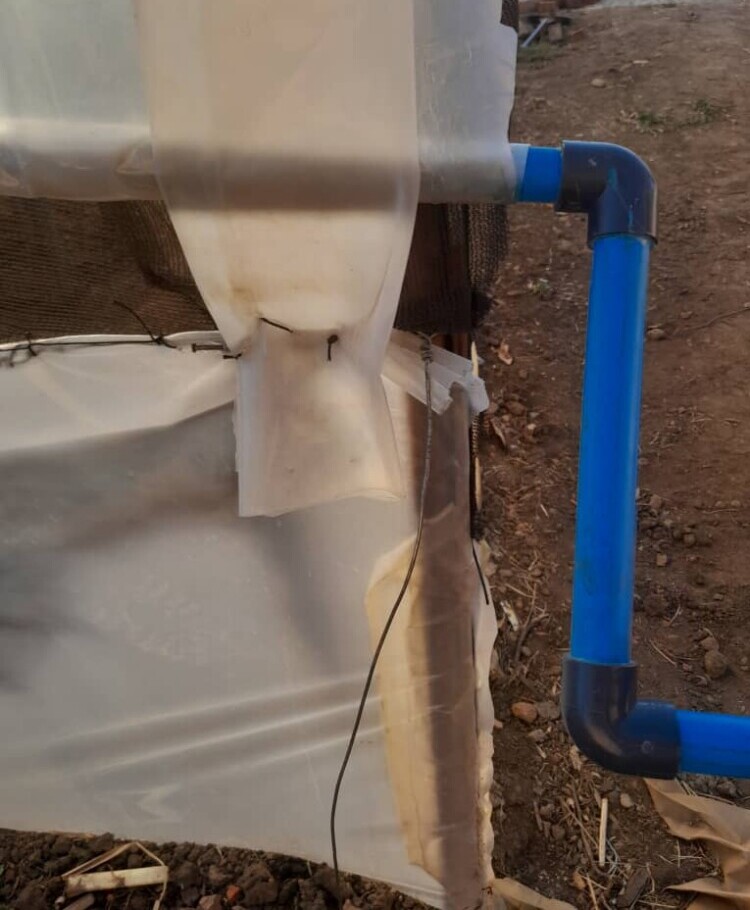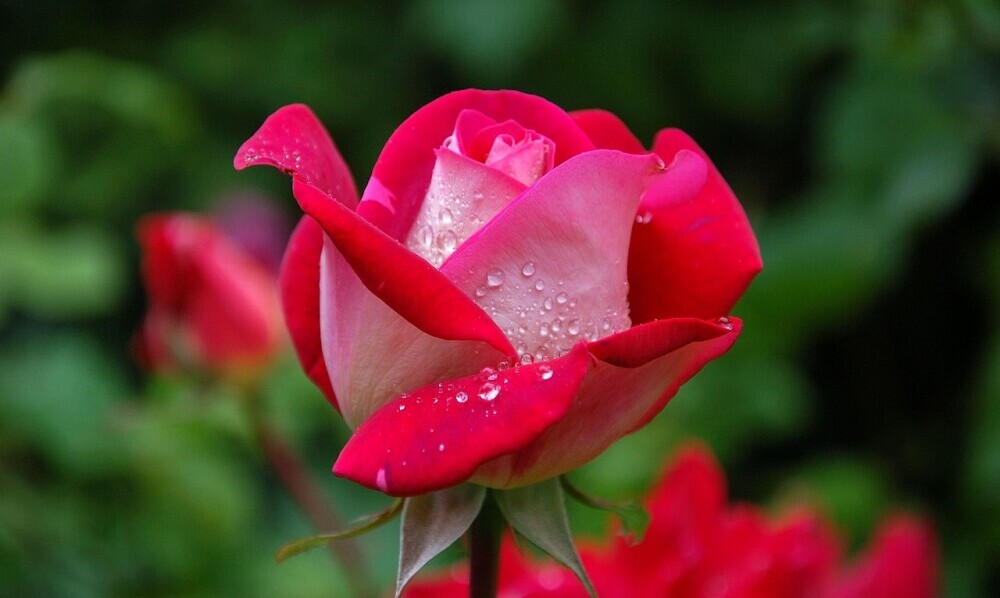Growing roses in a compact greenhouse offers a fantastic way to cultivate these beautiful flowers regardless of your climate.
However, the controlled environment demands careful attention to watering techniques.
Too much water can lead to fungal diseases, while too little can hinder growth and blooming.
This article provides a comprehensive guide to watering roses effectively in a compact greenhouse, ensuring healthy, vibrant blooms.
Understanding the Unique Challenges of Greenhouse Watering
Compact greenhouses present specific watering challenges compared to open gardens.
These include:
- Increased Humidity : Greenhouses trap moisture, which can be beneficial but also create an environment conducive to fungal diseases. Proper ventilation and careful watering are crucial to manage humidity levels.
- Higher Temperatures: Temperatures inside a greenhouse can fluctuate dramatically, especially during sunny days. This can lead to rapid evaporation, requiring more frequent watering than outdoor roses.
- Limited Space: Compact greenhouses often mean closely planted roses, increasing the risk of water splashing and spreading diseases. Targeted watering methods are essential.
- Controlled Environment: While you control the environment, this also means you’re solely responsible for providing the right amount of water. There’s no natural rainfall to supplement your efforts.
Key Factors Affecting Rose Watering Needs in a Greenhouse
Several factors influence how often and how much you should water your roses:
- Rose Variety: Different rose varieties have varying water requirements. Research your specific rose type for optimal watering guidelines.
- Growth Stage: Roses need more water during active growth periods, such as when they are developing new shoots and blooming. Watering can be reduced slightly during dormancy.
- Potting Mix: The type of potting mix you use significantly impacts water retention. Well-draining mixes require more frequent watering than those that retain moisture.
- Temperature and Humidity: Higher temperatures and lower humidity increase evaporation, necessitating more frequent watering.
- Sunlight: Roses need ample sunlight, but intense sunlight can also dry out the soil quickly.
- Ventilation: Good ventilation helps regulate humidity and prevents fungal diseases. However, it can also increase water evaporation.
Effective Watering Techniques for Greenhouse Roses
Here are some proven methods for watering roses in a compact greenhouse:
- Hand Watering with a Watering Can: This allows for precise watering, ensuring the water reaches the roots without splashing the foliage. Use a watering can with a rose head for a gentle, even distribution.
- Soaker Hose: Soaker hoses deliver water directly to the soil, minimizing water waste and reducing the risk of fungal diseases. They are particularly useful for larger collections of roses.
- Drip Irrigation: This is another efficient method that delivers water directly to the base of the plants, conserving water and reducing the risk of foliar diseases. It’s ideal for consistent watering.
- Avoid Overhead Watering: Overhead watering, especially in the evening, can lead to fungal diseases as the foliage remains wet for extended periods.
- Water Deeply and Infrequently: Encourage deep root growth by watering thoroughly when you do water. Allow the top inch or two of soil to dry out slightly between waterings. This prevents overwatering and promotes healthy root development.
- Water Early in the Day: Watering in the morning allows the foliage to dry before nightfall, reducing the risk of fungal diseases.
- Monitor Soil Moisture: Use your finger or a moisture meter to check the soil moisture before watering. Don’t rely solely on visual cues, as the surface of the soil can be dry while the soil below is still moist.
- Adjust Watering Based on Weather Conditions: Increase watering during hot, dry weather and reduce watering during cooler, humid weather.
- Fertilize Regularly: Roses need regular feeding, and watering is crucial for distributing nutrients throughout the plant. Use a rose-specific fertilizer and follow the instructions carefully.
Troubleshooting Common Watering Problems
- Yellowing Leaves: Can be a sign of overwatering or underwatering. Check the soil moisture to determine the cause.
- Brown Leaf Tips: Often indicates underwatering.
- Black Spot or Mildew: These fungal diseases are often caused by overwatering or poor ventilation. Improve ventilation and avoid overhead watering.
- Stunted Growth: Can be a sign of either overwatering or underwatering, as well as nutrient deficiencies.
Tips for Success
- Keep a Watering Log: Record when you water and how much, as well as any observations about your roses’ health. This helps you track your watering habits and make adjustments as needed.
- Mulch Around Your Roses: Mulch helps retain moisture in the soil, reduces weed growth, and regulates soil temperature.
- Provide Adequate Ventilation: Ensure your greenhouse has adequate ventilation to prevent excessive humidity and fungal diseases.
Frequently Asked Questions (FAQs)
1. How often should I water roses in a compact greenhouse?
It depends on factors like temperature, humidity, soil type, and the rose variety. As a general rule, water deeply when the top 1–2 inches of soil are dry. During hot periods, this may mean watering every 2–3 days, while in cooler conditions, once a week may be sufficient.
2. Is it better to water roses in the morning or evening in a greenhouse?
Morning is best. Watering early allows foliage to dry during the day, reducing the risk of fungal diseases like powdery mildew and black spot, which thrive in damp conditions overnight.
3. Can I use tap water for watering greenhouse roses?
Yes, but be cautious. Tap water is usually safe, but if it’s high in salts or chlorine, it can affect rose health over time. If possible, use rainwater or allow tap water to sit overnight to dissipate chlorine before using.
4. How do I know if I’m overwatering my greenhouse roses?
Signs include yellowing leaves, soggy soil, root rot, and stunted growth. Always check the soil moisture level before watering, and ensure containers or beds have good drainage.
5. What’s the best method of watering roses in a compact greenhouse?
Drip irrigation or soaker hoses are ideal as they deliver water directly to the roots, reduce splashing, and help prevent fungal infections. Hand watering with a can is also effective when done carefully.
6. Do roses in containers need more frequent watering than those in beds?
Yes. Potted roses dry out faster than those planted in the ground or raised beds. They may require daily watering during hot spells, especially if the pots are small or the greenhouse gets intense sun.
7. Should I mist my roses to increase humidity in the greenhouse?
No. Misting roses can lead to fungal problems. Instead, control humidity with proper ventilation and mulching, and let your watering schedule dictate moisture levels.
8. What tools can help me manage watering better in a small greenhouse?
Useful tools include soil moisture meters, drip irrigation systems, watering cans with rose heads for gentle flow, and timers for consistent watering schedules.
9. Can overwatering cause fungal diseases in greenhouse roses?
Absolutely. High humidity and wet foliage or soil create perfect conditions for fungal issues like black spot, powdery mildew, and botrytis. Always water at the base and avoid wetting leaves.
10. How does mulching help with watering in a compact greenhouse?
Mulch helps retain soil moisture, reduces evaporation, regulates soil temperature, and suppresses weeds. Use organic mulch like bark, compost, or straw around the base of your roses.
Conclusion
Watering roses in a compact greenhouse requires attention to detail and a good understanding of your roses’ needs.
By following the techniques outlined in this article, you can create the ideal environment for your roses to thrive and produce beautiful blooms.
Remember to observe your plants closely and adjust your watering practices as needed.
With a little practice and patience, you’ll be rewarded with a stunning display of roses in your compact greenhouse.
Lets keep the conversation going. Please leave your message in the comment section below and I promise to get back to you.
Happy gardening !!!!!!!!!!!
Here’s a little transparency: Our website contains affiliate links. This means if you click and make a purchase, we may receive a small commission. Don’t worry, there’s no extra cost to you. It’s a simple way you can support our mission to bring you quality content.





This article was so insightful – thank you for diving into watering strategies for greenhouse-grown roses! I’m considering setting up a small greenhouse for a few varieties — especially minis or patio types — and I appreciated the emphasis on deep, regular watering while allowing the top inch of soil to dry slightly between sessions.
I’m curious, do you adjust your watering frequency based on seasonal shifts inside the greenhouse? I’ve read that watering less often in cooler months—and watering early in the day—can reduce fungal problems as humidity rises.
Thanks again for such a helpful guide—I’d love to hear more about your personal greenhouse routine or challenges.
Hi Alyssa,
Thank you so much for your comment.
I am really glad you found the watering strategies helpful, and it is exciting to hear you’re considering setting up a greenhouse for your roses, especially minis and patio varieties—they’re perfect for smaller spaces!
You’re absolutely right about adjusting watering based on seasonal shifts inside the greenhouse. As the temperature drops in cooler months, the humidity tends to rise, and the plants need less frequent watering.
In fact, reducing watering during the winter months helps prevent over-watering and the risk of fungal diseases, like powdery mildew. I
definitely recommend watering earlier in the day, as this gives the plants time to absorb the moisture before the cooler nighttime temperatures set in, which can help reduce the chances of mold or mildew developing.
In terms of my personal routine, I try to monitor the soil moisture regularly—especially in the cooler months. I also adjust my watering frequency based on the growth stage of the roses.
When they’re actively growing in spring and summer, I tend to water more frequently, ensuring deep watering that encourages strong root development.
During the slower growth months (fall and winter), I cut back, watering just enough to keep the soil moist without making it too wet.
I hope this helps, and thanks for asking! If you have more questions or would like to discuss more greenhouse tips, feel free to reach out anytime.
Wish you all the best with your greenhouse setup, I’m sure your roses will thrive.
Best regards,
Raymond.